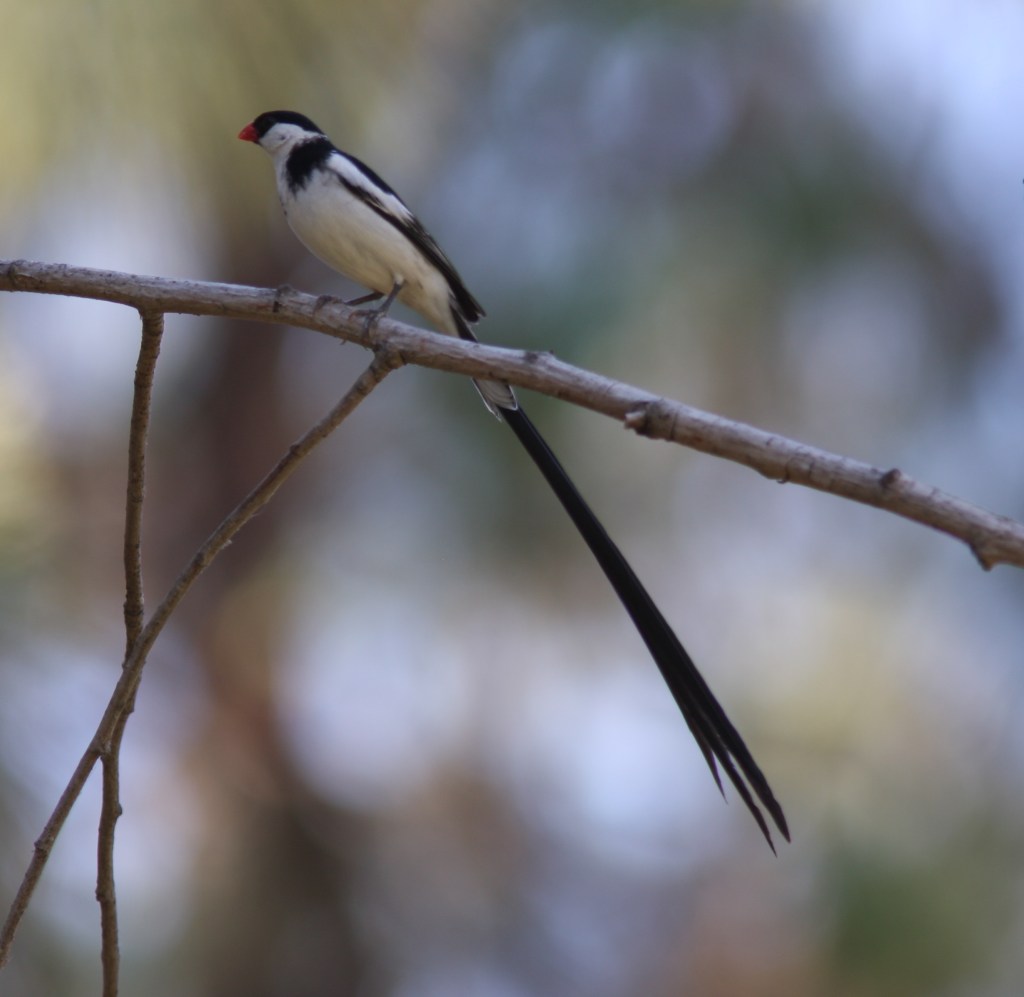Invasion of the Mannikins
Introduced Birds Take a Toll on Native Species — Free Santa Barbara Museum of Natural History Event on May 2

Introduced Birds Take a Toll on Native Species — Free Santa Barbara Museum of Natural History Event on May 2

They arrived a few years ago, in ones and twos at first, uninvited and unwelcome, but now they are all around us, and it’s not unusual to see groups of a score or more taking the food intended for the natives. The bird I’m referring to is the scaly breasted munia, more commonly known in the pet trade as nutmeg mannikin or spice finch.
Birders have a love-hate relationship with munias. They are undeniably attractive, but they certainly do compete directly with our native seed-eating birds. As with anything in nature that we have negative feelings about, though, we need to take a good look at ourselves. The bird is not to blame for wanting to survive — after all, they wouldn’t be here without us.
Scaly breasted munias are native to Southeast Asia, Indonesia, and the Philippines, but because they are popular cage birds and are highly adaptable and hardy, they have spread into many corners of the world, including Southern California. These escaped cage birds were first recorded breeding in our state in 1988, and the first local sighting was along lower Atascadero Creek in Goleta in 2000. Small numbers were seen in the years following this initial discovery, but then the population exploded.
Munias are at home in weedy agricultural fields, creek beds, and residential areas; they come readily to feeders. They are inevitably to be seen in flocks, sometimes of up to 20 birds, but in the fall, they congregate in large flocks; up to 200 can be seen together in weedy fields, quickly stripping grasses of seeds and depriving migrating birds of a much-needed food source. On the 2016 Santa Barbara Christmas Bird Count, 462 individuals were recorded.
Munias are small birds with short tails, resembling finches because of their stout bills, but they are in the waxbill family. Adults are a rich brown above, and the underparts are white with dark scaly markings. Young birds are plain brown all over. Individuals in flocks stay in constant contact with one another with soft calls and whistles.
Munias are only one of an increasing number of birds that have become established because of escapes/releases from the pet trade. Another bird that is rapidly expanding in the south county is the Swinhoe’s white-eye, while Eurasian collared doves have been common residents for a couple of decades. In the Los Angeles area, it’s not uncommon to encounter large flocks of red-crowned and lilac-crowned parrots, which are thriving on the fruits of exotic trees. These two species of parrot are endangered in their native Mexico.

Some bird species were introduced deliberately. The house sparrow, European starling, and rock pigeons (the pigeons of city streets) were introduced to New York in the 1800s and have since spread from coast to coast.

Interestingly, another escaped cage bird that also happens to be a brood parasite, the pin-tailed whydah, originally from Africa, has begun to parasitize the scaly breasted munia in the Los Angeles area. Whydahs, the males of which have improbably long tails, do not build nests of their own but lay their eggs in other birds’ nests, and the host readily rears the young whydahs. In Africa, whydahs parasitize birds that build domed nests, and one of the few birds that build domed nests in Southern California is, you guessed it, the scaly breasted munia. The whydah has only been recorded once in our county, but it will be interesting to watch what happens to the population of the munias if whydahs become established. Oh, what a tangled web….
Do you want to know more about introduced birds? On Thursday, May 2, birding legend Kimball Garrett will give an illustrated talk on Southern California’s Other Avifauna: Trends, Traits, and Troubles of Our Naturalized Bird Species. This free Santa Barbara Audubon Society event will be held at 7:30 p.m. at the Museum of Natural History’s Fleischmann Auditorium (2559 Puesta Del Sol). See bit.ly/4cSAKFx.
Hugh Ranson is a member of Santa Barbara Audubon Society, a nonprofit organization that protects area birdlife and habitat and connects people with birds through education, conservation, and science. For more information, see SantaBarbaraAudubon.org.
Thu, May 02 5:00 PM
Santa Barbara
Sat, May 04 10:00 AM
Lompoc
Wed, May 01 7:30 PM
Santa Barbara
Thu, May 02 5:00 PM
Santa Barbara
Thu, May 02 5:00 PM
Santa Barbara
Fri, May 03 4:00 PM
Santa Barbara
Fri, May 03 8:00 PM
Santa barbara
Sat, May 04 10:00 AM
Solvang
Sat, May 04 11:00 AM
Santa Barbara
Sat, May 04 11:00 AM
Santa Barbara
Sat, May 04 3:00 PM
Solvang
Sat, May 04 7:00 PM
Santa Barbara
Please note this login is to submit events or press releases. Use this page here to login for your Independent subscription
Not a member? Sign up here.
You must be logged in to post a comment.